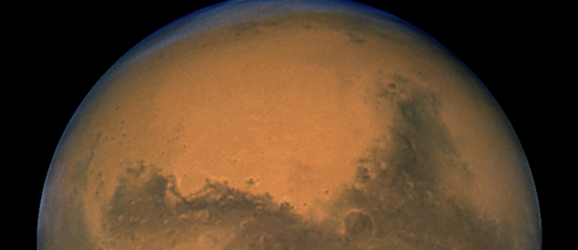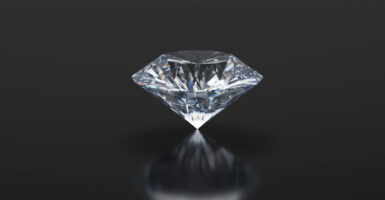Mars Could Harbor Microbial Life Even Now
This article is more than 2 years old

The recent news of microbes being present in at least one lake beneath Antarctica has reaffirmed many suspicions that some form of life exists among the harsh climates of our red neighbor, Mars. I’m not sure why no one believed me when I started saying this 15 years ago. I mean, I took the aluminum foil off my head and everything.
The NASA Astrobiology Institute and the UK Centre for Astrobiology hosted a “Present-Day Habitability of Mars” conference earlier this month at the University of California Los Angeles, which included various presentations from astronomers and scientists from all over the country.
Chris McKay of NASA’s Ames Research Center focused on microbial life, and the similarities between Antarctica, the Atcama desert, and Mars in terms of cold and arid conditions and radiation levels, which Antarctica gets hit with due to the hole in the ozone that opens up from August to November. McKay also theorized that organisms shielded from UV rays by deeply embedding themselves in rocks may still be close enough to the surface to experience the benefits of photosynthesis. He also discussed a process called deliquescence, during which salt and other compounds on the ground use moisture from the air to turn into a liquid.
University of Arizona’ Alfred McEwen presentation focused on “briny water flows.” McEwen is the principal investigator for the HIRise camera aboard NASA’s Mars Reconnaissance Orbiter spacecraft, and he says there are 16 confirmed sites where syrupy fluids flow down the Martian slopes, usually in the region of the Valles Marineris canyon complex. Although these liquids may develop underground, the deliquescence theory is posited here as well, since next to nothing is actually known about them. And now I’m hungry for waffles.
Another highlight of the talks was that of perchlorate, a chemical containing chlorine that was found in the planet’s soil during the Viking missions, but which has not been fully understood until now. The chlorine was formerly seen as a result of contamination, but after tests were done on Earth soils known to contain organic materials using perchlorate, they found the same results. So it’s possible those older soil samples had contained organic compounds that the perchlorate destroyed. On the flip side, it’s a “potent chemoautotrophic energy source,” says the Ames Center’s Carl Stoker, which could be a possible stand-in for photosynthesis when it comes to keeping microbes alive in areas where sunlight never reaches.
This could also explain how certain MMORPG players survive in rooms where the only connections to the outside world are a cable modem and a window blocked by an air conditioning unit.












